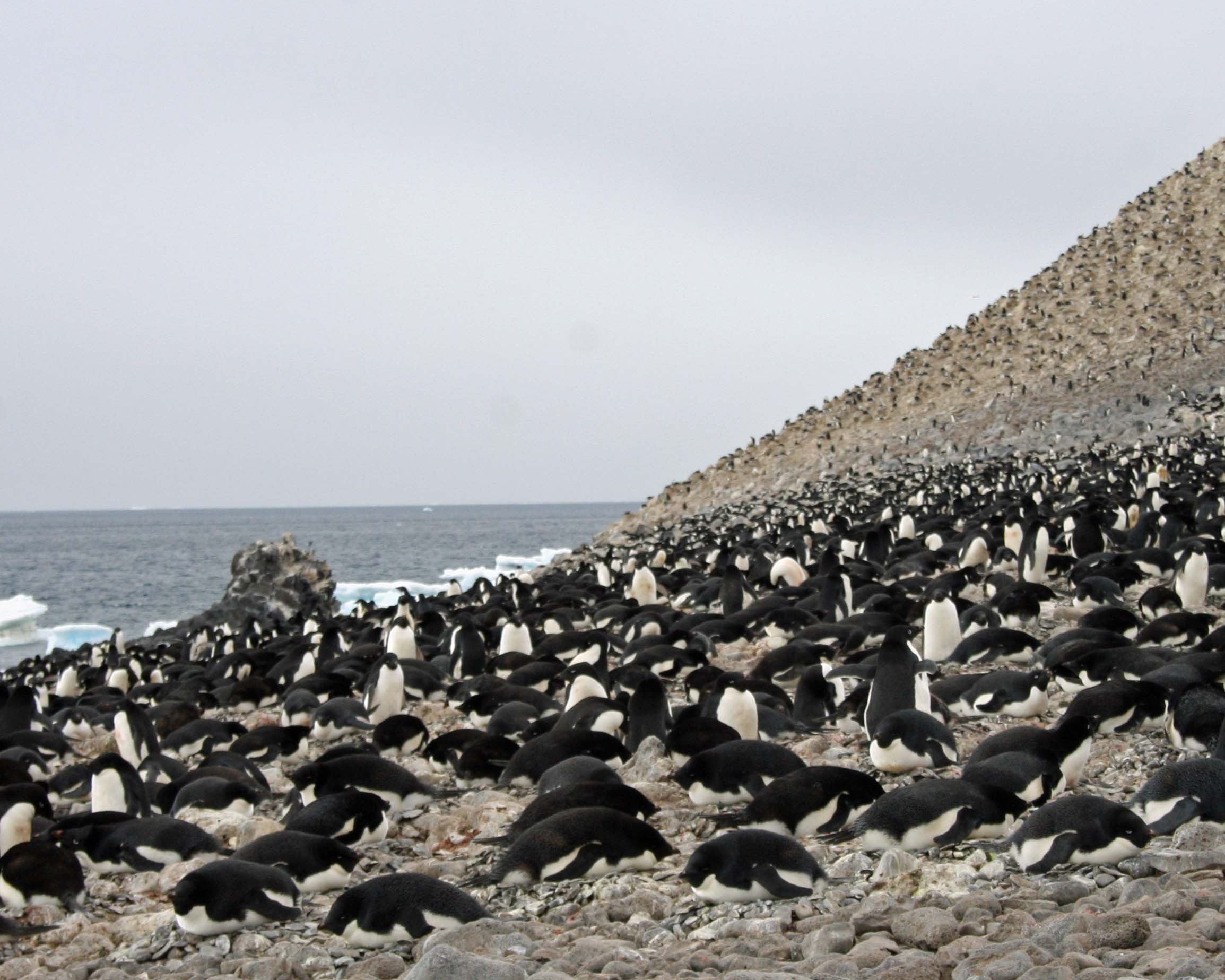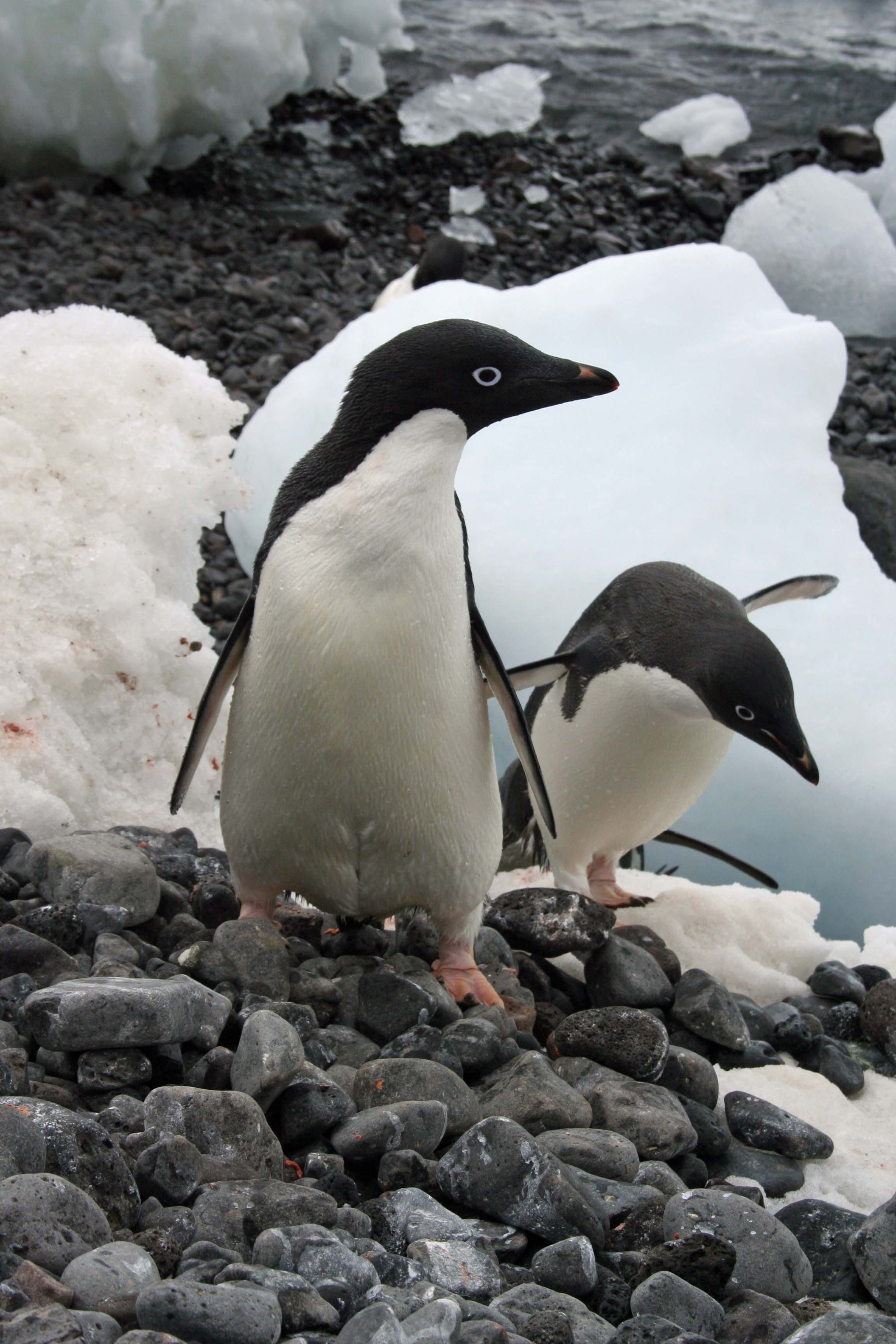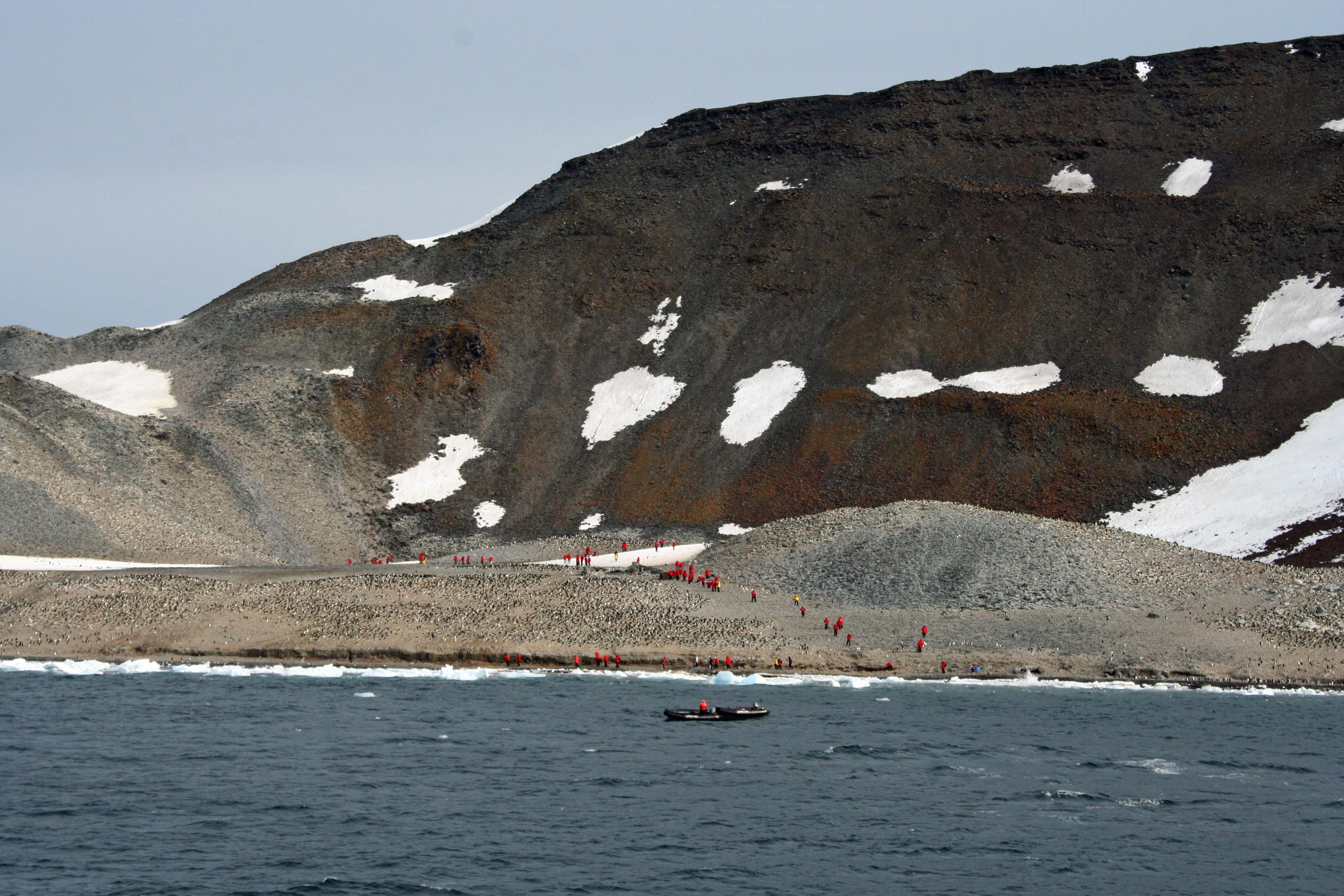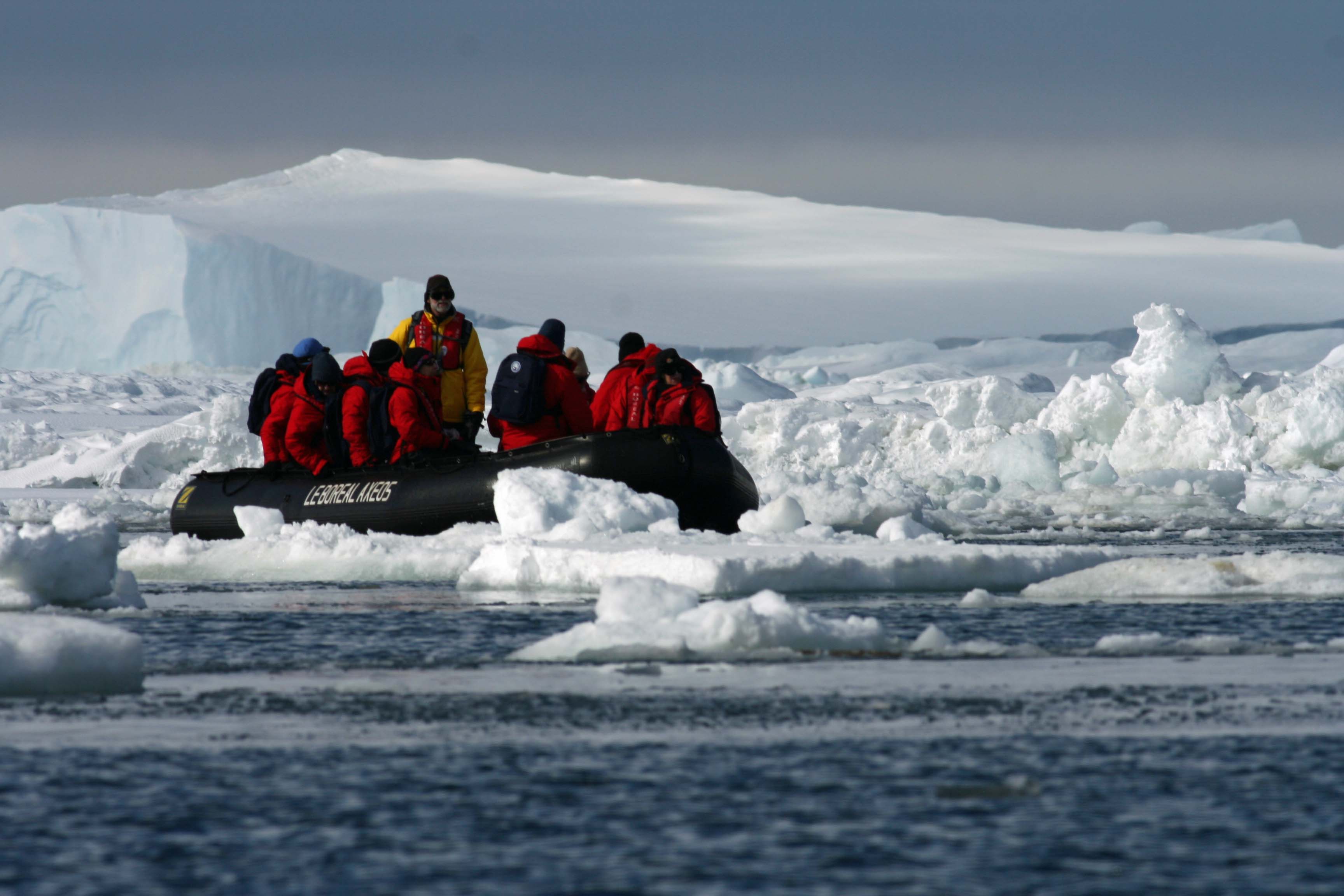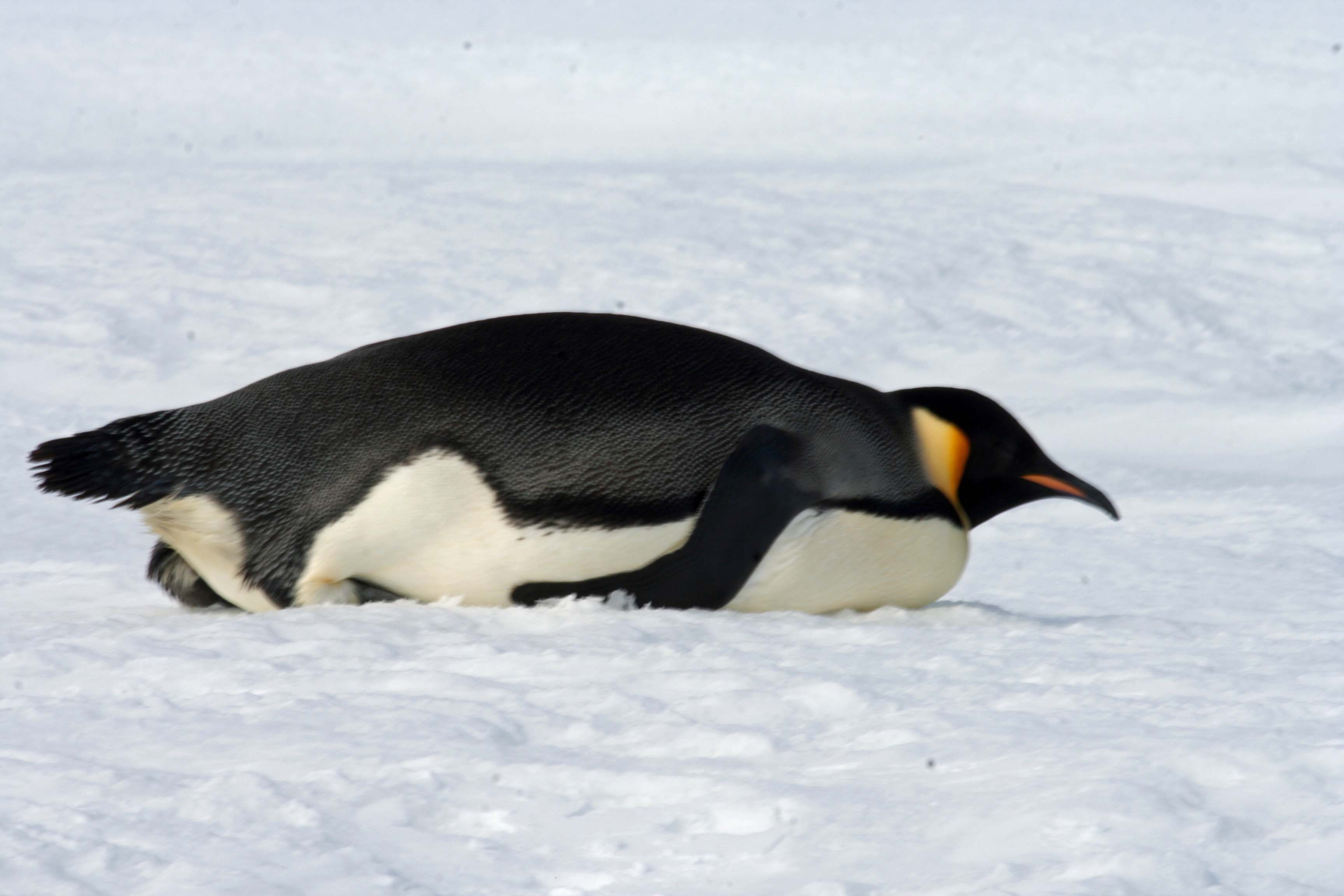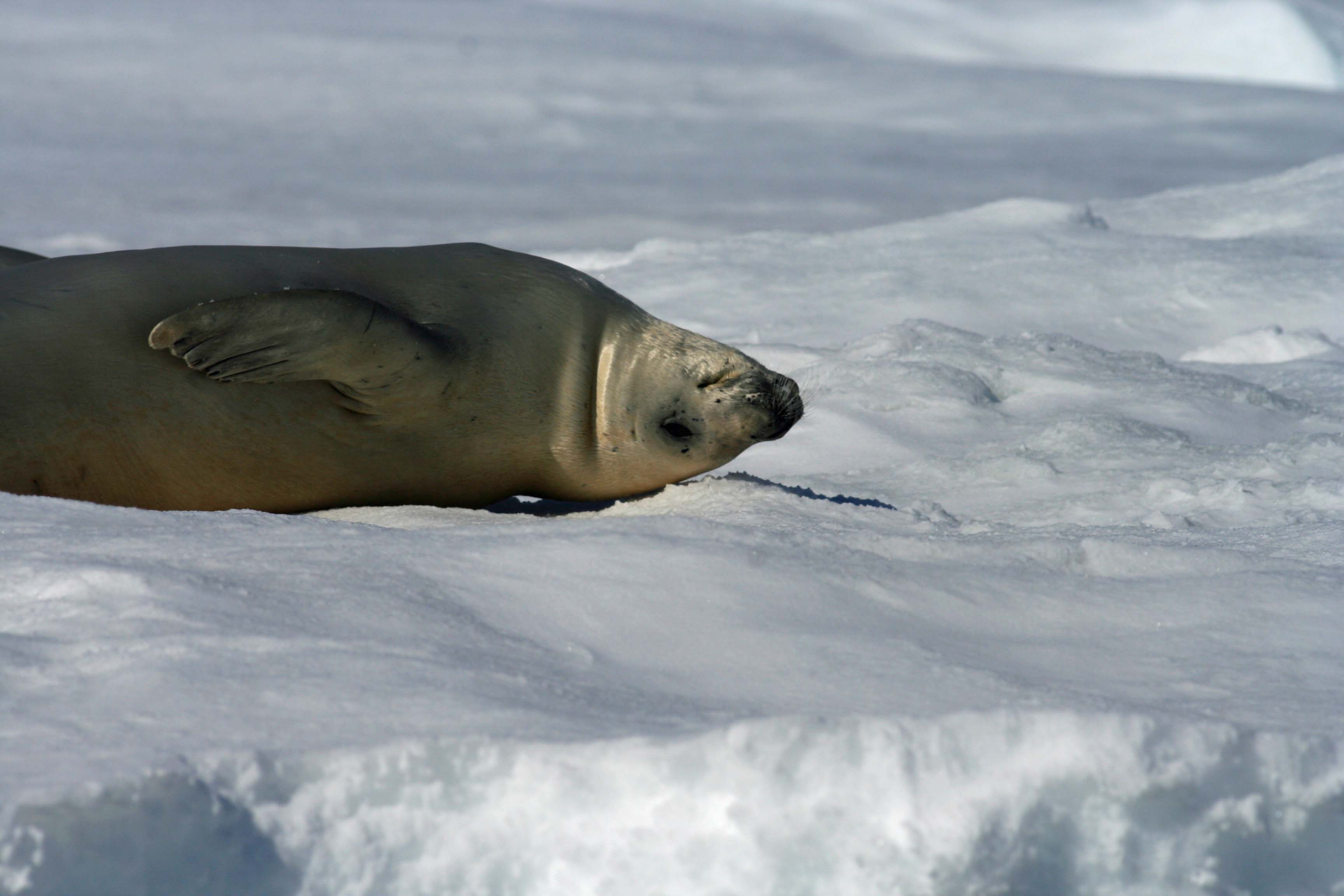Journey to Antarctica: A very rare opportunity - Emperor Penguins!
Tuesday, December 13, 2011
We had another incredible day today. Yesterday another ship had reported an opening in the pack ice in the Weddell Sea southeast of Le Boreal's position, so the crew decided to take advantage of the opportunity and drop "plan A" in favor of the rare opportunity to explore the edge of the pack ice.
When we awoke, we were surrounded by a breathtaking scene. Pure white snow and blue-green ice spread out in all directions beneath a cobalt-blue sky. Even from the ship, we could see rather tall looking figures on the ice. They were Emperor penguins!
Many people know of Emperors from watching "March of the Penguins," and understand the harsh conditions they endure during the winter night. We were fortunate to have Dr. Patricia Silva in our Zodiac as we approached the edge of the ice. She explained that there are about 200,000 breeding pairs distributed throughout nearly one dozen far-flung sites in Antarctica. All but two of these locations are located on the fast ice. Dr. Silva says these birds are in the process of fattening up, which is a bit hard to believe since the Emperors we saw were huge, but some can even larger reaching nearly 100 pounds. This feeding mode lasts until the breeding cycle begins in late March or early April, which is the beginning of winter around here.
These fellows are massive birds standing more than three feet tall, making them the largest members of all 17 penguin species alive today. Some can tip the scales at around 100 pounds. Their stature combined with colorful plumage makes watching them a fun and exciting experience. I don't think anyone thought we'd have a chance to see these beautiful animals.
While Emperors are the largest species of penguins on Earth today, there have been even bigger penguins in the past.
When paleontologist Dr. Julia Clarke was in Chattanooga a few years ago to help us launch "Dinosaurs Alive 3D" at the Tennessee Aquarium IMAX 3D Theater, she told me about her discoveries in South America.
Inkayacu paracasensis, was a species of penguin that grew to enormous proportions. Fossil records show that these birds were twice the size of Emperor penguins, reaching nearly six feet in height. Imagine seeing a colony of human-sized penguins! Aside from their shape and giant beaks, you might not have recognized these guys. They weren't black and white. If you want to know more, here are three interesting links to explore:
New York Times: "Extinct Penguin Wore Earth Tones, Fossil Shows"
EarthSky.com: "Penguin ancestors didn't wear black and white"
And an interview with Dr. Julia Clarke.
From the Weddell Sea's pack ice, we journeyed back northward toward Paulet Island. This extinct volcano is the home to more than 100,000 breeding pairs of Adelie penguins. As you might imagine, a colony that large produces a rather strong aroma and we could smell the island from across the channel aboard Le Boreal. It was a truly amazing experience to be surrounded by so many penguins. Many already had chicks while others were incubating their eggs and keeping petrels and skuas away from their nests. Like the Aquarium's gentoos and macaronis, the Adelies of Paulet Island use rocks for nesting material. So it was very fun to watch them carrying rocks around the island. It was especially fun to watch these penguins popping in and out of the water. The sounds of courtship calls, squabbles and gentle honks was thrilling.
There is also the remains of an old hut on the island which is the historic site Dr. Otto Nordenskjold's 1901-1904 Swedish Antarctic Expedition. This party added to the knowledge of Antarctica by collecting fossils while overwintering on nearby Snow Hill Island. Their story of survival and rescue on Paulet Island is simply amazing. Bob Burton, the Antarctic historian on board re-told this story on camera for me. I'll try to post it online at a later date after returning home.
Today the Adelies have taken over the hut and I was able to capture some nice footage of one Adelie feeding a chick.
This morning, Tuesday December 13th, the weather turned a bit fowl. We had planned to hike up to a chinstrap penguin rookery on Half Moon Island, but with 30 knot sustained winds and 40 to 50 knot gusts at the landing site, this landing was cancelled. (Maybe the date has something to do with our weather luck running out.) The A&K crew braved the elements to investigate the site, getting thoroughly soaked in the process going both directions. So we are now heading to Deception Island, another volcano that has been active in the relatively recent past. If the weather is not too rough, Le Boreal will navigate "Neptune's Bellows," the narrow entrance to the flooded caldera of the original volcano where winds blow in and out.

